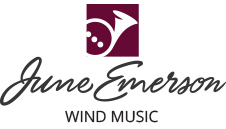| Composer: | Bologne, Joseph (1745-1799) Chevalier de Saint-Georges & Talbot-Howard, Althea |
| Instrumentation: | ob/cl/vn. pft. |
| Publisher Ref: | e-PKP8a |
| Arranger: | Talbot-Howard, Althea |
| Publisher: | Pantokrator Publications |
| Year of Issue: | 2022 |
You will receive two separate emails: one which contains the order confirmation and receipt; one which includes the links to your downloaded products. You will also find these links within the My Account area of the website - click on the relevant order number within the Downloads tab to find them. For this reason it is mandatory to register for, or log in to, your online account in order to purchase/retrieve Digital Editions.
Digital Editions are watermarked on every page with the purchaser’s name, email address, order date and order number.
You have 2 attempts to download each PDF. If you have any problems downloading the files, or both attempts are unsuccessful, please Contact us giving full details of the problems you've experienced and we'll do our best to resolve the issue.
PLEASE NOTE: - Digital editions cannot be downloaded onto a mobile phone. - Please ensure that you check all your details are correct before confirming your order. - We cannot refund Digital Editions where a download has been attempted. - Digital Editions are for individual use only and NOT for resale.We offer a truly comprehensive selection of wind music online, with well over 65,000 titles listed, most of which are in stock and ready for immediate despatch.
We also stock a large range of theory and aural resources and specialist books.
We are absolutely committed to providing a first class service to musicians worldwide.
If you’re looking for a piece of music that isn’t listed on our website, we will do whatever we can to find it for you, no matter how long it takes.
VAT No: 172 1180 92 GB
EORI No: GB172118092000
We are a friendly, helpful team of people with lots of specialist knowledge.
For advice and information, contact us on +44(0)1439 788324 Monday to Friday (excluding Bank Holidays) between 9am and 5pm (GMT).
9am to 5pm (GMT)
Monday to Friday
(excluding UK Bank Holidays)
VAT No: 172 1180 92 GB
EORI No: GB172118092000
June Emerson Wind Music
Windmill Farm
Ampleforth
York
YO62 4HF
England
Email: sales@juneemersonwindmusic.com
Tel: +44 (0)1439 788324
Fax: +44 (0)1439 788715
Copyright 2024 © June Emerson Wind Music. All rights reserved.
Privacy Policy / Terms & Conditions
